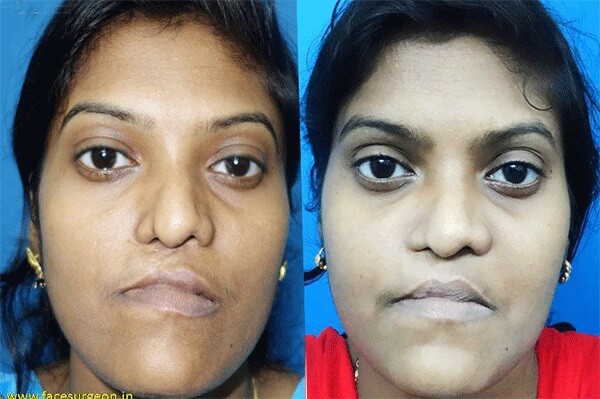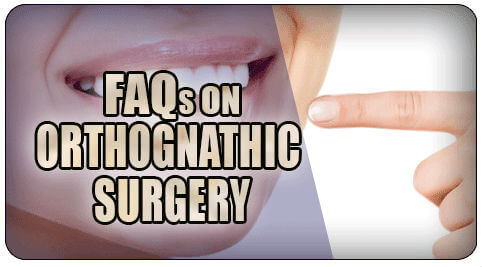Frequently asked questions about Orthognathic Surgery
What Is Orthognathic Surgery?
Ortho – Straight, Gnathic – Jaw(S). Orthognathic surgeries are referred to any surgery done to the upper or lower jaw or both to change their position in such a way so as to make them more functionally and aesthetically pleasing.

Who is an ideal candidate for Orthognathic surgeries?
The surgery is performed to move your upper or lower jaw or both to new positions to correct conditions related to growth, shape or to treat disorders such as sleep apnea, Temporomandibular joint disorders, improper or abnormal bite problems owing to skeletal disharmonies, or other orthodontic problems that cannot be easily treated with orthodontics.
Orthognathic surgery can also be done for patients who want to change their facial characteristics like moving the jaws forwards or backwards or upper teeth, gummy smile, excessive tooth display while smiling, flared teeth, open bite between the front teeth.
Orthognathic surgeries procedure?
The surgery will take place under general anaesthesia. It will be carried out intraorally there will be no visible scars on your face. The jawbone is exposed from inside the mouth and then cut and fractured to allow for easy movements. It is moved into its new position and held in place with small metal plates and screws. The gum is stitched back into place with dissolvable stitches that can take two weeks or more to dissolve.
Hospital stay?
You will have to stay at the hospital for a maximum of 3 days, however, depending on the patient condition & post-procedure recovery time, the hospital stay will be decided.
Post-procedure?
Since the patient is treated under general anaesthesia, the patient will remain groggy for at least 2-3 hours post the operation, after which he starts to recover. The patients usually have full recovery the very next day after the procedure. The patients won’t have much pain post-surgery, however, there will be mild discomfort as is usually seen after any major surgery. The patient will be prescribed painkillers as well as antibiotics to prevent any postoperative pain or infection.
The patient will be on a liquid diet initially followed by soft foods as well as there will be swelling seen in the facial regions that have been operated upon. The swelling is likely to subside in a week or two varying from individual to individual.
Risks
The postoperative risks in patients undergoing orthognathic surgery are rare, however, they must be mentioned & discussed.
- Bleeding: there is a chance of slight oozing or bleeding after your surgery in recovery. However, this is normal and can easily be controlled by applying pressure with a piece of gauze or cotton.
- Numbness: Patient might feel a slight numbness or tingling sensation in the facial areas after the procedure. This will gradually decrease with time.
- Orthodontic treatment: In a few weeks after your surgery, we will place you on intraoral elastics or on orthodontic therapy if required as an adjuvant to the surgical procedure.
Here at Richardsons dental and craniofacial hospital, a battery of pre-surgical tests and investigations are done including blood tests, radiographic scans, model analysis, analysis of the 3-dimensional facial scans etc. The team of doctors which includes the Orthognathic surgeon, the orthodontist, maxillofacial surgeon and the dentist then chalk out the final treatment plan for the patient.

